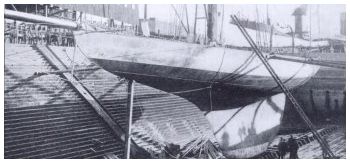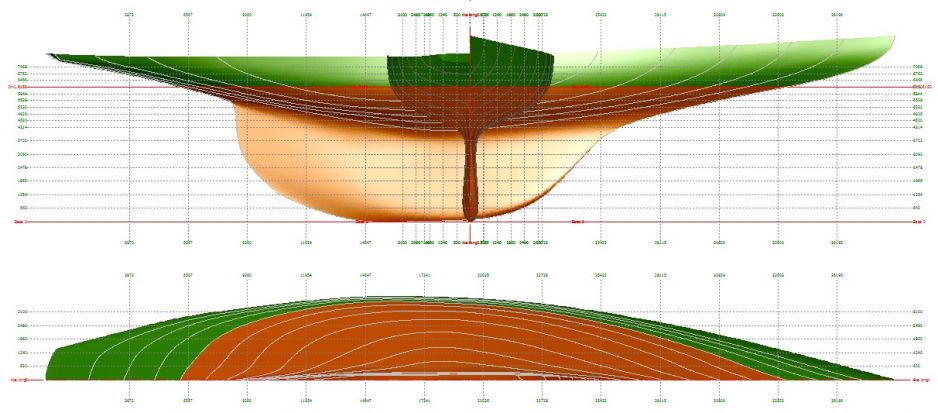Yves GARY Hits: 5956
Category: SHAMROCK
 The beginnings of Lipton and Fife
The beginnings of Lipton and FifeWhen Lipton decided to challenge he was content with no half-way measures, and gave designer Fife a carte blanche order to spare no expense, but to turn out the fastest boat that money could produce. William Fife, Jr., was the designer of the successful cutters Clara and Minerva which had raced ...
... in this country some ten years before, and while he had been very successful in small boats, he had only turned out two large racing yachts, neither of which had been over successful.
In Shamrock, as Lipton named his challenger, Fife turned out a boat of the extreme type. She was built by Thorneycroft & Co., the well-known builders of torpedo boats, and lightness of construction was demanded. She followed Defender somewhat in the use of material, her bottom plating being of manganese bronze, while aluminum was used for the topsides. It will be remembered that this latter material had proved unsatisfactory in Defender, that boat being structurally weak, and in this country it was discarded in the construction of future large yachts. Shamrock was tied together with stringers, straps, and cross braces inside to make her strong enough to stand the ocean crossing. Her racing mast, boom, and gaff were of steel, built up and braced, but the mast gave constant trouble by buckling in a breeze to such an extent as to impair the efficiency of her sails, of which it is said that she had six different suits that season.
Shamrock's lines have never been published. She combined some of the features of Britannia with those of Defender. She was not so wide as the challenger that preceded her, Valkyrie III, by a foot, but was finer, and more powerful, while her spar-plan was designed for a great spread of canvas.
Her principal dimensions were : Length over all 128 feet, waterline 89 feet, 8 inches, beam 25 feet, draft 20 feet, 3 inches, and sail area 13,492 square feet. Her hull was very flat and broad, with long ends, while her keel was hardly more than a fin, being cut away forward while the rudder post had a considerable rake to it. Great secrecy was -observed in building her, so the weight of the lead bulb is not known, though it was said to be in excess of seventy-five tons.
|
|
|||||||||||||||||||||||||||||||||||||||||||||||||||
Plan created with DELFTSHIP

Download the MODEL FOR DELFTSHIP : Hull only
Download the MODEL FOR DELFTSHIP : Full model

